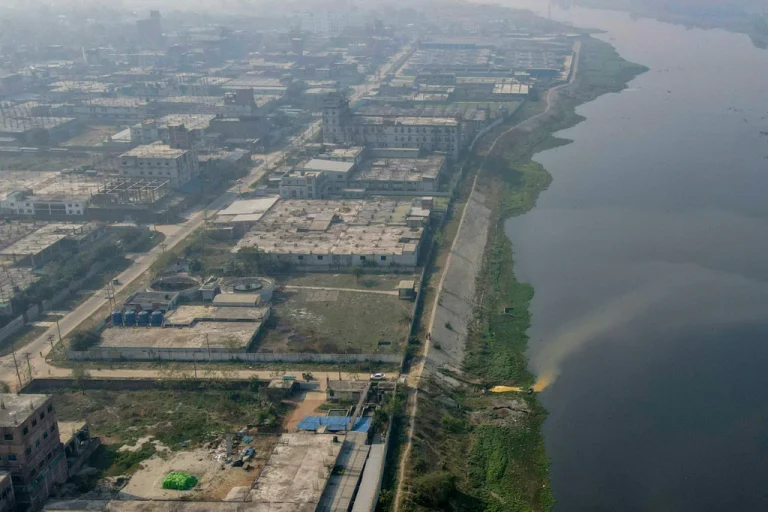
Any action will be too late for the five rivers that circle Dhaka and its industrial outskirts – all are already technically dead, meaning they are completely devoid of marine life, said prominent environmental activist Sharif Jamil
Bangladeshi ferryman Kalu Molla began working on the Buriganga river before the patchwork of slums on its banks gave way to garment factories — and before its waters turned pitch black.
The 52-year-old has constant cough, allergies and skin rashes, and doctors have told him the vile-smelling sludge that has also wiped out marine life in one of Dhaka’s main waterways is to blame.
In the half-century since a devastating independence war left its people facing starvation, Bangladesh has emerged as an often unheralded economic success story.
Underpinning years of runaway growth is the booming garment trade, servicing global fast-fashion powerhouses, employing millions of women and accounting for around 80 percent of the country’s $50 billion annual exports.
Bangladesh’s capital Dhaka was founded on the banks of the Buriganga more than 400 years ago by the Mughal empire.
“For centuries people built their homes on its banks to bask in the river breeze,” he added. “Now the smell of toxic sludge during winter is so horrible that people have to hold their noses as they come near it.”
Both elements are used in leather tanning and excessive exposure to either is extremely hazardous to human health: chromium is carcinogenic, and chronic cadmium exposure causes lung damage, kidney disease and premature births.
– ‘They are powerful people’ –
Residents say they have given up complaining about the putrid smell of the water, knowing that offending businesses are easily able to shirk responsibility.
“If someone wants (to) raise the issue to the factories, they’d beat them up. They are powerful people with connections.”
Further south, in Narayanganj district, residents showed AFP a stream of crimson-coloured water draining into stagnant canals from a nearby factory.
The Bangladesh Garment Manufacturers and Exporters Association (BGMEA), which represents the interests of around 3,500 top factories, defends its record by pointing out the environmental certifications given out to its members.
But smaller factories and sub-contractors operating on the industry’s razor thin margins say they are unable to afford the cost of wastewater treatment.
“Not everyone regularly uses it. They want to save costs,” he said.
Bangladesh is a delta country criss-crossed by more than 200 waterways, each of them connected to the mighty Ganges and Brahmatura rivers that course from the Himalayas and through the South Asian subcontinent.
Authorities have established a commission tasked with saving key water bodies, upon which close to half the country’s population depend for farming, according to the UN Food and Agriculture Organization.
Its newly appointed chief, Manjur Chowdhury, said “greedy” industrialists were to blame for the state of the country’s waterways.
“We have to frame new laws to face this emergency situation. But it will take time,” he told AFP.
All are already technically dead, meaning they are completely devoid of marine life, said prominent environmental activist Sharif Jamil.
sam/sa/gle/aha/ser
…